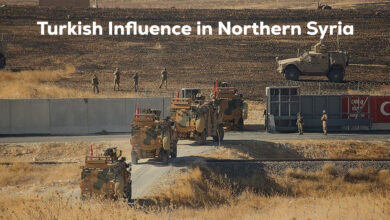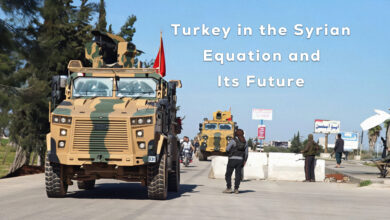ISIS and its instigators failed again

The recent events in the city of Hasakah in northeast Syria revealed new challenges and a new escalation level that the Autonomous Administration of North and East Syria (AANES) has not witnessed for years. The attack launched on al-Sina’a prison in Hasakah city confirms the extent of coordination and cooperation among the contradicting parties despite their antagonism regarding the Syrian conflict, such as Turkey, Russia, Iran and the Syrian regime.
The course of events in Guweiran prison and the systematic plan prepared for that attack cannot be separated from the Syrian issue in general, with its political and military aspects, and from the strong relationship between Turkey and the US, especially in some consensus regarding the Kurdish issue.
The US have not yet showed a clear and real strategy in north and east Syria in terms of fighting terrorism and confronting ISIS and in cooperation with the Syrian Democratic Forces (SDF).
According to its undeclared strategy in the region, and after the military elimination of ISIS in Baghouz, in March 2019, it no longer attaches great importance to ISIS terrorist remnants detained by the SDF, and dry up the sources of this organization. The policy of indifference and not taking the terrorist threats of ISIS in north and east Syria into account, gave suitable opportunities for Turkey, the Syrian regime and Russia to exploit this lax policy of the US by using the terrorist sleeper cells against the SDF, and causing chaos in order to sow discord and strife among the communities northeast Syria, in order to end the political and military system that protects the region from ISIS terrorism and the Turkish genocidal regime.
All the schemes hatched among these parties confirm the failure of their previous attempts to end the democratic project of the autonomous administration) through military operations, for the intervention of internal civil groups in their agendas to incite them against the administration, based on the state of division among clan members and the loyalty of each section to a party, in addition to the existing discord inside the Kurdish political movement, playing on nationalist sentiments through media incitement, in addition to imposing a systematic siege on the region represented by closing the crossings to commercial traffic.
In general, all these attempts failed through people’s awareness and recognition of the conditions experienced by the population in the areas under the control of these parties.
Accordingly, the future of the region and the thorny challenges it faces remain on several aspects, from the Turkish occupation of northern Syria, the moves made by the Syrian regime and its attempts to win over the Arab clans to its side, in addition to the Russian silence regarding the pressures on the Autonomous Administration in the face of Turkish attacks. All these facts confirm that the situation is open to all possibilities, given the challenges and the political reality of the Syrian issue in general.




